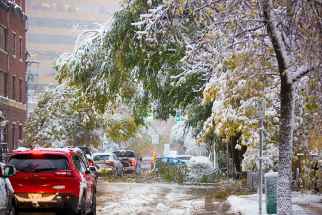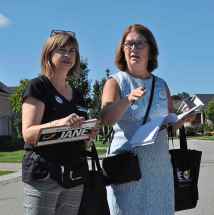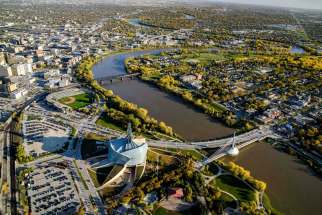‘Tree apocalypse in Winnipeg’ City deals with impact of early-season snowstorm on roads, energy grid, tree canopy
Read this article for free:
or
Already have an account? Log in here »
To continue reading, please subscribe:
Monthly Digital Subscription
$0 for the first 4 weeks*
- Enjoy unlimited reading on winnipegfreepress.com
- Read the E-Edition, our digital replica newspaper
- Access News Break, our award-winning app
- Play interactive puzzles
*No charge for 4 weeks then price increases to the regular rate of $19.00 plus GST every four weeks. Offer available to new and qualified returning subscribers only. Cancel any time.
Monthly Digital Subscription
$4.75/week*
- Enjoy unlimited reading on winnipegfreepress.com
- Read the E-Edition, our digital replica newspaper
- Access News Break, our award-winning app
- Play interactive puzzles
*Billed as $19 plus GST every four weeks. Cancel any time.
To continue reading, please subscribe:
Add Free Press access to your Brandon Sun subscription for only an additional
$1 for the first 4 weeks*
*Your next subscription payment will increase by $1.00 and you will be charged $16.99 plus GST for four weeks. After four weeks, your payment will increase to $23.99 plus GST every four weeks.
Read unlimited articles for free today:
or
Already have an account? Log in here »
Hey there, time traveller!
This article was published 11/10/2019 (2256 days ago), so information in it may no longer be current.
When Tim Ducharme left his Banning Avenue home Friday morning, he could hardly believe what he saw.
Not only was his yard blindingly white, where only a few days earlier it was green, but all along the road between Sargent and Ellice avenues were trees — dozens of them — leaning toward the ground, with branches and limbs scattered all around. In front of his neighbour’s house, a whole tree was down.
“I wondered how the rest of the city was going to deal with this,” said Ducharme, a father of four.
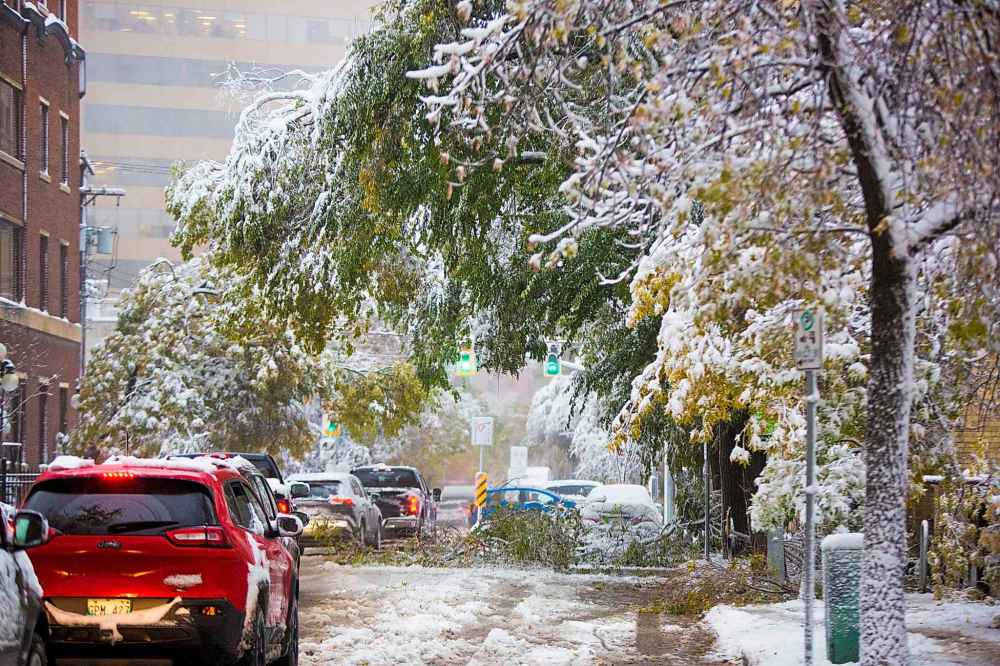
As it turns out, Winnipeg had quite a number of problems to deal with, as an unseasonably early storm blanketed the Prairie city in snow. Roads needed plowing and salting, buses were slowed, and massive outages left as many as 28,000 homes without power — putting a strain on Manitoba Hydro crews and police, who were forced to direct vehicles in the wake of darkened traffic lights.
At 8:30 a.m., city workers engaged the emergency operations centre, a cross-departmental team of 25 employees in various capacities, to plan and enact a timely response as snow continued to fall and demand for services grew.
Winnipeg Fire Paramedic Service received about double its normal call volume (average 311 wait time was about one hour, 45 minutes), and Hydro crews were repairing so many downed lines the energy utility couldn’t provide any estimates on when work would be complete.
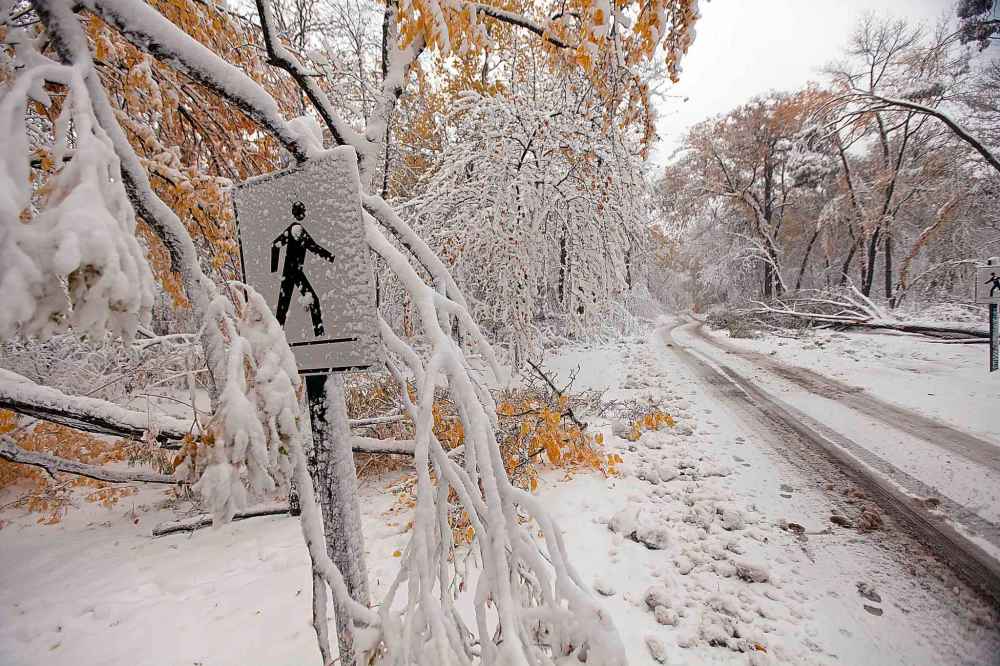
“I can sum (the situation) up pretty succinctly,” Hydro public affairs officer Bruce Owen said, regarding the morning outages and downed lines, which affected more than 45,000 people in Manitoba. “It’s bad.”
Mayor Brian Bowman said the public service was working around the clock, and encouraged residents to only travel when absolutely necessary, reminding them to be cautious of road conditions and downed power lines.
The trees threw another wrinkle into the recovery process.
The early October storm meant many deciduous trees had yet to lose their leaves, and the sticky snow coating them adds more weight than they can handle, said Jacques Tardif, a biology professor at the University of Winnipeg who studies forest disturbances and the impact of climate on tree growth.
Once wet snow is packed onto the branches, Tardif said, the trees bend toward the ground, catching more weight as time goes by. Accumulation of ice and snow can increase the branch weight of trees by as much as 30 per cent, and with leaves still on the trees, there is more surface area for precipitation to accumulate.
A lot of trees that normally tower over bungalows and parked cars had their tips reaching the sidewalk, putting Winnipeg arborists through the paces as they raced across the city to clean up fallen trees and debris on major routes in support of the emergency centre’s storm control efforts.
Matt Binet, manager of tree care operations in Winnipeg for Green Drop, said he’s never seen anything like it in 25 years: logs through windshields, blocking roads and sidewalks.
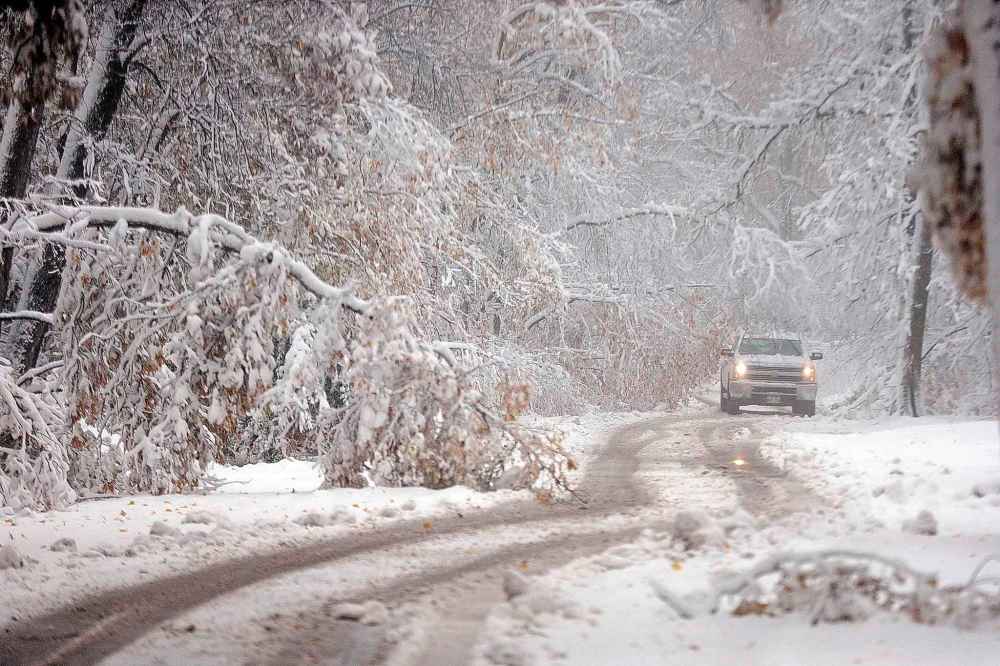
“There is so much out there, it’s crazy,” said Binet, who had 30 workers in the field Friday. “While going to one disaster, we’ll pass three others… It’s a perfect storm that’s creating a tree apocalypse in Winnipeg. It’s heartbreaking.”
In River Heights, Michelle Curry didn’t hear the tree in front of her home crack in half, but the meteorologist and weather forecasting instructor somewhat saw it coming. With the snow caking on the deciduous branches, “I figured it was bound to happen,” she said. “It’s a recipe for disaster.”
Bowman, who recently challenged the city to plant one million trees in the next 20 years in an effort to combat challenges facing Winnipeg’s tree population, reiterated the main focus for the duration of the storm was keeping citizens protected and informed.

“We’re not planting trees today, but the longterm objective is underscored by this event,” he said. “But I know of at least one or two trees in the backyard of the Bowmans that will need to be helped.”
Because the city’s priority was on clearing debris from major roads and in public places, there is still untold clean-up work ahead in residential areas, emergency centre manager Jason Shaw said.
The city is advising residents with downed trees or branches to be extremely cautious, as they may have contact with a power line.
Aside from calling professionals to deal with fallen trees and debris, calling 911 if any downed power lines are spotted, executing caution on the road, and making sure to have adequate emergency response kits, Shaw said the best idea for Winnipeggers would likely be to stay home and keep the roads clear.
ben.waldman@freepress.mb.ca

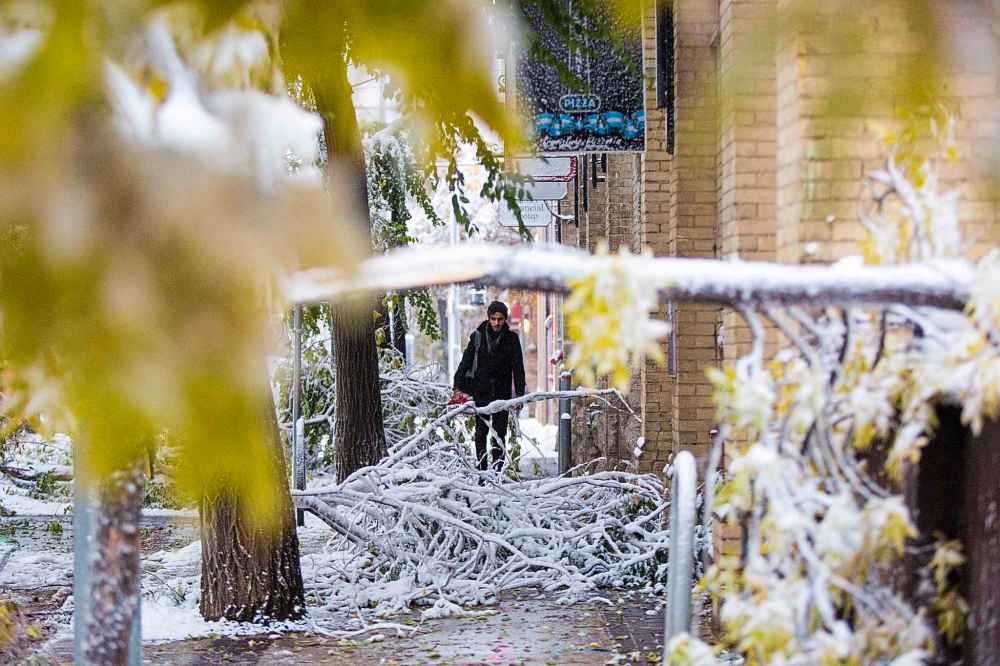

Ben Waldman covers a little bit of everything for the Free Press.
Our newsroom depends on a growing audience of readers to power our journalism. If you are not a paid reader, please consider becoming a subscriber.
Our newsroom depends on its audience of readers to power our journalism. Thank you for your support.









